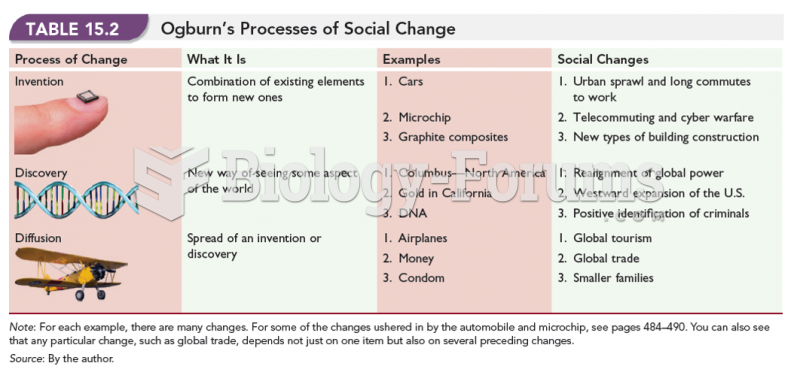Answer to Question 1
The nine Social Work Competencies are listed below. Programs may add competencies that are consistent with their mission and goals and respond to their context. Each competency describes the knowledge, values, skills, and cognitive and affective processes that comprise the competency at the generalist level of practice, followed by a set of behaviors that integrate these components. These behaviors represent observable components of the competencies, while the preceding statements represent the underlying content and processes that inform the behaviors.
Competency 1-Demonstrate ethical and professional behavior: Social workers understand the value base of the profession and its ethical standards, as well as relevant laws and regulations that may impact practice at the micro, mezzo, and macro levels. Social workers understand frameworks of ethical decision-making and how to apply principles of critical thinking to those frameworks in practice, research, and policy arenas. Social workers recognize personal values and the distinction between personal and professional values. They also understand how their personal experiences and affective reactions influence their professional judgment and behavior. Social workers understand the profession's history, its mission, and the roles and responsibilities of the profession. Social workers also understand the role of other professions when engaged in interprofessional teams. Social workers recognize the importance of life-long learning and are committed to continually updating their skills to ensure they are relevant and effective. Social workers also understand emerging forms of technology and the ethical use of technology in social work practice.
Social workers:
make ethical decisions by applying the standards of the NASW Code of Ethics, relevant laws and regulations, models for ethical decision-making, ethical conduct of research, and additional codes of ethics as appropriate to context;
use reflection and self-regulation to manage personal values and maintain professionalism in practice situations;
demonstrate professional demeanor in behavior; appearance; and oral, written, and electronic communication;
use technology ethically and appropriately to facilitate practice outcomes; and
use supervision and consultation to guide professional judgment and behavior.
Competency 2-Engage diversity and difference in practice: Social workers understand how diversity and difference characterize and shape the human experience and are critical to the formation of identity. The dimensions of diversity are understood as the intersectionality of multiple factors including but not limited to age, class, color, culture, disability and ability, ethnicity, gender, gender identity and expression, immigration status, marital status, political ideology, race, religion/spirituality, sex, sexual orientation, and tribal sovereign status. Social workers understand that, as a consequence of difference, a person's life experiences may include oppression, poverty, marginalization, and alienation as well as privilege, power, and acclaim. Social workers also understand the forms and mechanisms of oppression and discrimination and recognize the extent to which a culture's structures and values, including social, economic, political, and cultural exclusions, may oppress, marginalize, alienate, or create privilege and power. Social workers:
apply and communicate understanding of the importance of diversity and difference in shaping life experiences in practice at the micro, mezzo, and macro levels;
present themselves as learners and engage clients and constituencies as experts of their own experiences; and
apply self-awareness and self-regulation to manage the influence of personal biases and values in working with diverse clients and constituencies.
Competency 3-Advance human rights and social, economic, and environmental justice: Social workers understand that every person regardless of position in society has fundamental human rights such as freedom, safety, privacy, an adequate standard of living, health care, and education. Social workers understand the global interconnections of oppression and human rights violations, and are knowledgeable about theories of human need and social justice and strategies to promote social and economic justice and human rights. Social workers understand strategies designed to eliminate oppressive structural barriers to ensure that social goods, rights, and responsibilities are distributed equitably and that civil, political, environmental, economic, social, and cultural human rights are protected. Social workers:
apply their understanding of social, economic, and environmental justice to advocate for human rights at the individual and system levels; and
engage in practices that advance social, economic, and environmental justice.
Competency 4-Engage in practice-informed research and research-informed practice: Social workers understand quantitative and qualitative research methods and their respective roles in advancing a science of social work and in evaluating their practice. Social workers know the principles of logic, scientific inquiry, and culturally informed and ethical approaches to building knowledge. Social workers understand that evidence at informs practice derives from multi-disciplinary sources and multiple ways of knowing. They also understand the processes for translating research findings into effective practice. Social workers:
use practice experience and theory to inform scientific inquiry and research;
apply critical thinking to engage in analysis of quantitative and qualitative research methods and research findings; and
use and translate research evidence to inform and improve practice, policy, and service delivery.
Competency 5-Engage in & policy practice: Social workers understand that human rights and social justice, as well as social welfare and services, are mediated by policy and its implementation at the federal, state, and local levels. Social workers understand the history and current structures of social policies and services, the role of policy in service delivery, and the role of practice in policy development. Social workers understand their role in policy development and implementation within their practice settings at the micro, mezzo, and macro levels and they actively engage in policy practice to effect change within those settings. Social workers recognize and understand the historical, social, cultural, economic, organizational, environmental, and global influences that affect social policy. They are also knowledgeable about policy formulation, analysis, implementation, and evaluation. Social workers:
identify social policy at the local, state, and federal level that impacts well-being, service delivery, and access to social services;
assess how social welfare and economic policies impact the delivery of and access to social services;
apply critical thinking to analyze, formulate, and advocate for policies that advance human rights and social, economic, and environmental justice.
Competency 6-Engage with individuals, families, groups, organizations, and communities: Social workers understand that engagement is an ongoing component of the dynamic and interactive process of social work practice with, and on behalf of, diverse individuals, families, groups, organizations, and communities. Social workers value the importance of human relationships, Social workers understand theories of human behavior and the social environment, and critically evaluate and apply this knowledge to facilitate engagement with clients and constituencies, including individuals, families, groups, organizations, and communities. Social workers understand strategies to engage diverse clients and constituencies to advance practice effectiveness. Social workers understand how their personal experiences and affective reactions may impact their ability to effectively engage with diverse clients and constituencies. Social workers value principles of relationship-building and interprofessional collaboration to facilitate engagement with clients, constituencies, and other professionals as appropriate. Social workers:
apply knowledge of human behavior and the social environment, person-in-environment, and other multidisciplinary theoretical frameworks to engage with clients and constituencies; and
use empathy, reflection, and interpersonal skills to effectively engage diverse clients and constituencies.
Competency 7-Assess individuals, families, groups, organizations, and communities: Social workers understand that assessment is an ongoing component of the dynamic and interactive process of social work practice with, and on behalf of, diverse individuals, families, groups, organizations, and communities. Social workers understand theories of human behavior and the social environment, and critically evaluate and apply this knowledge in the assessment of diverse clients and constituencies, including individuals, families, groups, organizations, and communities. Social workers understand methods of assessment with diverse clients and constituencies to advance practice effectiveness, Social workers recognize the implications of the larger practice context in the assessment process and value the importance of interprofessional collaboration in this process. Social workers understand how their personal experiences and affective reactions may affect their assessment and decision-making. Social workers:
collect and organize data, and apply critical thinking to interpret information from clients and constituencies;
apply knowledge of human behavior and the social environment, person-in-environment, and other multidisciplinary theoretical frameworks in the analysis of assessment data from clients and constituencies;
develop mutually agreed-on intervention goals and objectives based on the critical assessment of strengths, needs, and challenges within clients and constituencies; and
select appropriate intervention strategies based on the assessment, research knowledge, and values and preferences of clients and constituencies.
Competency 8-Intervene with individuals, families, groups, organizations, and communities: Social workers understand that intervention is an ongoing component of the dynamic and interactive process of social work practice with, and on behalf of, diverse individuals, families, groups, organizations, and communities. Social workers are knowledgeable about evidence informed interventions to achieve the goals of clients and constituencies, including individuals, families, groups, organizations, and communities. Social workers understand theories of human behavior and the social environment, and critically evaluate and apply this knowledge to effectively intervene with clients and constituencies. Social workers understand methods of identifying, analyzing and implementing evidence-informed interventions to achieve client and constituency goals. Social workers value the importance of interprofessional teamwork and communication in interventions, recognizing that beneficial outcomes may require interdisdplinary, interprofessional, and interorganizational collaboration. Social workers:
critically choose and implement interventions to achieve practice goals and enhance capacities of clients and constituencies;
apply knowledge of human behavior and the social environment, person-in-environment, and other multidisciplinary theoretical frameworks in interventions with clients and constituencies;
use inter-professional collaboration as appropriate to achieve beneficial practice outcomes;
negotiate, mediate, and advocate with and on behalf of diverse clients and constituencies; and
facilitate effective transitions and endings that advance mutually agreed-on goals.
Competency 9-Evaluate practice with individuals, families, groups, organizations, and communities: Social workers understand that evaluation is an ongoing component of the dynamic and interactive process of social work practice with, and on behalf of, diverse individuals, families, groups, organizations and communities. Social workers recognize the importance of evaluating processes and outcomes to advance practice, policy, and service delivery effectiveness. Social workers understand theories of human behavior and the social environment, and critically evaluate and apply this knowledge in evaluating outcomes. Social workers understand qualitative and quantitative methods for evaluating outcomes and practice effectiveness. Social workers:
select and use appropriate methods for evaluation of outcomes;
apply knowledge of human behavior and the social environment, person-in-environment, and other multidisciplinary theoretical frameworks in the evaluation of outcomes;
critically analyze, monitor, and evaluate intervention and program processes and outcomes; and
apply evaluation findings to improve practice effectiveness at the micro, mezzo, and macro levels.
Answer to Question 2
Jack Rothman and John Tropman categorized them into three models: locality development, social planning, and social action. These models are ideal types. Actual approaches to community change tend to blend characteristics of all three models.
Locality Development Model: The locality development (also called community development) model asserts that community change can best be brought about through broad-based participation by a wide spectrum of people at the local community level. The approach seeks to involve a cross section of individuals (including the disadvantaged and those high up in the power structure) in identifying and solving problems. Some themes emphasized in this model are democratic procedures, a consensus approach, voluntary cooperation, development of indigenous leadership, and self-help. The roles of the community practitioner in this approach include enabler, catalyst, coordinator, and teacher of problem-solving skills and ethical values. It is assumed that any conflicts among various groups can be creatively and constructively resolved. People are encouraged to express their differences freely and to put aside self-interests to further the interests of their community. The locality development model seeks to use discussion and communication among different factions to reach consensus on which problems to focus on and which strategies or actions to use to resolve these problems. A few examples of such efforts include neighborhood work programs conducted by community-based agencies; Volunteers in Service to America; village-level work in some overseas community development programs, including the Peace Corps; and a variety of activities performed by self-help groups.
Social Planning Model: The social planning approach emphasizes the process of problem solving. It assumes that community change in a complex industrial environment requires highly trained and skilled planners who can guide complex change processes. The role of the expert is crucial to identifying and resolving social problems. The expert or planner is generally employed by a segment of the power structure, such as an area planning agency, city or county planning department, mental health center, United Way board, community welfare council, and so on. Because the social planner is employed by the power structure, there is a tendency for him or her to serve the interests of that structure. Marshaling community resources and facilitating radical social change are generally not emphasized in this approach. The planner's roles in this approach include gathering facts; analyzing data; and serving as program designer, implementer, and facilitator. Community participation may vary from little to substantial, depending on the community's attitudes toward the problems being addressed. For example, an effort to design and fund a community center for older adults may or may not generate a lot of participation by interested community groups, depending on the politics surrounding such a center. Much of the focus of the social planning approach is on identifying needs and on arranging and delivering goods and services to people who need them. In effect, the philosophy is, Let's get the facts and take the next rational steps.
Social Action Model: The social action model assumes that there is a disadvantaged (often oppressed) segment of the population that needs to be organized, perhaps in alliance with others, to pressure the power structure for increased resources or for social justice. Social action approaches seek basic changes in major institutions or in basic policies of formal organizations. The objective is redistribution of power and resources. Whereas locality developers envision a unified community, social action advocates see the power structure as the opposition-the target of action. Perhaps the best-known social activist was Saul Alinsky, who advised: Pick the target, freeze it, personalize it, and polarize it. The roles of the community practitioner in this approach include advocate, agitator, activist, partisan, broker, and negotiator. Tactics used in social action projects are protests, boycotts, confrontation, and negotiation. The change strategy is one of Let's organize to overpower our oppressor. The client population is viewed as being victimized by the oppressive power structure. Examples of the social action approach include boycotts during the civil rights movement of the 1960s, strikes by unions, protests by antiabortion groups, and protests by African American and Native American groups. The social action model is not widely used by social workers at present. Involvement in social action activities may lead employing agencies to penalize those social workers with unpleasant work assignments, low merit increases, and withholding of promotions. Many agencies will accept minor and moderate changes in their service delivery systems but are threatened by the prospect of such radical changes as are often advocated by the social action approach.







